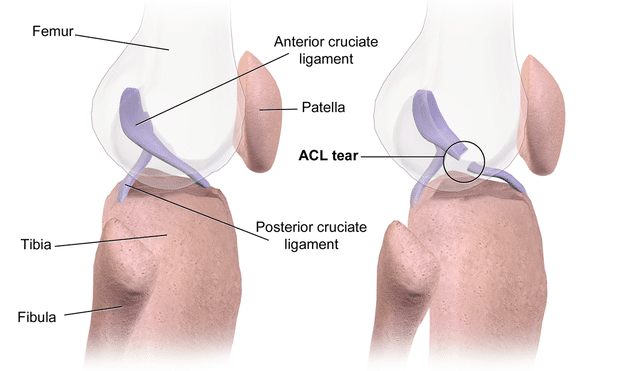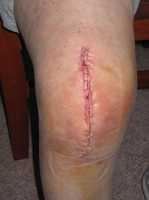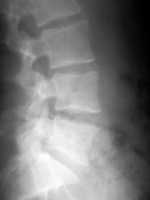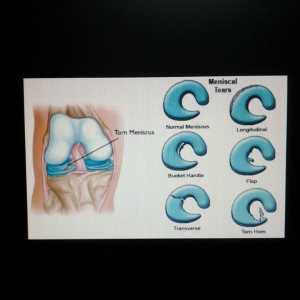MedicalResearch.com Interview with:
Karin Magnusson PT, PhD
Associate Researcher
Lund University and
Norwegian Institute of Public Health
MedicalResearch.com: What is the background for this study?
Response: Anterior cruciate ligament (ACL) injury is one of the most common knee injuries, for which very limited data has been presented on the genetic contribution. Based on our knowledge of the role of genetics in the development of ACL-rupture related traits, such as joint hypermobility and knee osteoarthritis, we hypothesized that heritability might play a role also in ACL injury.
Using the Swedish Twin Registry, which is the world's largest twin registry and in this study including more than 88.000 twins, we had unique data to for the first time reliably estimate the heritability for this common knee injury. (more…)
ASCO, Author Interviews, Cancer Research / 30.05.2020
Mobilizing Hospitalized Cancer Patients Improved Patients Satisfaction
MedicalResearch.com Interview with:
Cardinale Smith, MD, PhD
Associate Professor
Medicine, Hematology and Medical Oncology and
Geriatrics and Palliative Medicine
Icahn School of Medicine at Mount Sinai
New York
MedicalResearch.com: What is the background for this study?
Response: Cancer patients are often hospitalized with complications from cancer and cancer treatment. Physical decline is common among hospitalized cancer patients and contributes to poorer outcomes including increased length of stay, excess days, readmissions and patient experiences. Therefore, increased activity and mobilization during hospitalization are essential to prevent functional decline.
Whereas previous research has focused on risk factors that limit mobility and interventions for enhancing mobility in well-functioning, community dwelling older adults, there have been limited interventions on the mobility of hospitalized cancer patients.
(more…)
Author Interviews, JAMA, Orthopedics, Race/Ethnic Diversity, Surgical Research / 19.05.2020
Why Do Black Women Do Less Well After Knee Replacement?
MedicalResearch.com Interview with:
Alyson Cavanaugh, PT, PhD
Joint Doctoral Program in Epidemiology
University of California, San Diego/ San Diego State University
MedicalResearch.com: What is the background for this study?
Response: More than 700,000 total knee replacements are performed annually in the United States, but there is a racial disparity in outcomes after the surgery. If the knee replacement procedure is considered a highly effective treatment, why don't black women present with the same outcomes as whites?
Physical function when going into surgery has a large impact on the potential functional outcomes after surgery. Our hypothesis was that black women were presenting to surgery with poorer physical function, which was contributing to poorer functional outcomes after surgery.
(more…)
Author Interviews, Hip Fractures, JAMA, Orthopedics / 31.01.2020
After Hip Fracture Surgery, Length of Rehab Stay, Not Number of Treatments, Linked to Improved Self-Care
MedicalResearch.com Interview with:
Alison M. Cogan, PhD, OTR/L
Polytrauma/TBI Advanced Fellow
Washington DC VA Medical Center
Washington DC
MedicalResearch.com: What is the background for this study?
Response: Medicare is shifting from a volume- to value-based payment for postacute care services, in which value is determined by patient characteristics and functional outcomes. Matching therapy time and length of stay (LOS) to patient needs is critical to optimize functional outcomes and manage costs. The objective of this study was to investigate the association among therapy time, LOS, and functional outcomes for patients following hip fracture surgery.
This retrospective cohort study analyzed data on patients from 4 inpatient rehabilitation facilities and 7 skilled nursing facilities in the eastern and midwestern United States. Participants were patients aged 65 years or older who received inpatient rehabilitation services for hip fracture and had Medicare fee-for-service as their primary payer. We categorized patients into nine recovery groups based on low, medium, and high therapy minutes per day and low, medium, or high rate of functional gain per day. We measured the groups for functional mobility independence and self-care capabilities at the time each patient was discharged.
(more…)
Accidents & Violence, Author Interviews, Exercise - Fitness, Geriatrics, JAMA / 05.06.2019
Home Based Physical Therapy Can Help Prevent Falls in the Elderly
MedicalResearch.com Interview with:
Teresa Liu-Ambrose, PT, PhD
Canada Research Chair (Tier II), Physical Activity, Mobility, and Cognitive Neuroscience
Director, Aging, Mobility, and Cognitive Neuroscience Laboratory
University of British Columbia
MedicalResearch.com: What is the background for this study?
Response: Falls in older adults are the third-leading cause of chronic disability and the leading cause of hospitalization for adults over age 65. Older adults who experience multiple falls are at increased risk for disability, loss of independence, and even death. How to best prevent falls in this high risk group is not well established.
(more…)
Author Interviews, JAMA, Orthopedics, Pain Research, University of Pittsburgh / 09.01.2019
Lumbar Spinal Stenosis: Non-Surgical Options Compared
MedicalResearch.com Interview with:
Dr. Michael Schneider DC, PhD
Associate Professor
School of Health and Rehabilitation Sciences
University of Pittsburgh
MedicalResearch.com: What is the background for this study?
Response: Lumbar spinal stenosis (LSS) is one of the fastest growing problems in the country due to its aging population. One third of Medicare users have the condition, and it is the number one reason for spine surgery in this population. Existing research evaluates the benefits of nonsurgical treatment options compared to surgery, but there was no existing research that compared the available nonsurgical options to each other to determine the best course of treatment for each patient.
We studied three nonsurgical treatments for LSS: medical management with medications and/or epidural injections, individualized care with a physical therapist or chiropractor, and group exercise. We assessed each of these treatment methods with a questionnaire, a walking distance test, and a physical activity monitor.
(more…)
Author Interviews, JAMA, Orthopedics, Surgical Research / 03.10.2018
In Non-Locking Meniscal Knee Tears, Physical Therapy May Be As Good As Surgery
MedicalResearch.com Interview with:
 Victor A. van de Graaf, MD
OLVG Ziekenhuis
Amsterdam
MedicalResearch.com: What is the background for this study? What are the main findings?
Response: Although meniscal surgeries are among the most frequently performed surgical procedures in orthopedic surgery, until just recently there were hardly any randomized trials proving its superiority over conservative treatment.
In this randomized clinical trial, including 321 patients with non-obstructive (e.g. no locking of the knee joint) meniscal tears, we found physical therapy non-inferior to arthroscopic partial meniscectomy.
(more…)
Victor A. van de Graaf, MD
OLVG Ziekenhuis
Amsterdam
MedicalResearch.com: What is the background for this study? What are the main findings?
Response: Although meniscal surgeries are among the most frequently performed surgical procedures in orthopedic surgery, until just recently there were hardly any randomized trials proving its superiority over conservative treatment.
In this randomized clinical trial, including 321 patients with non-obstructive (e.g. no locking of the knee joint) meniscal tears, we found physical therapy non-inferior to arthroscopic partial meniscectomy.
(more…)
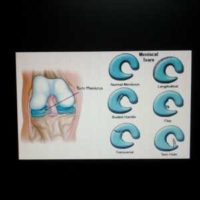 Victor A. van de Graaf, MD
OLVG Ziekenhuis
Amsterdam
MedicalResearch.com: What is the background for this study? What are the main findings?
Response: Although meniscal surgeries are among the most frequently performed surgical procedures in orthopedic surgery, until just recently there were hardly any randomized trials proving its superiority over conservative treatment.
In this randomized clinical trial, including 321 patients with non-obstructive (e.g. no locking of the knee joint) meniscal tears, we found physical therapy non-inferior to arthroscopic partial meniscectomy.
(more…)
Victor A. van de Graaf, MD
OLVG Ziekenhuis
Amsterdam
MedicalResearch.com: What is the background for this study? What are the main findings?
Response: Although meniscal surgeries are among the most frequently performed surgical procedures in orthopedic surgery, until just recently there were hardly any randomized trials proving its superiority over conservative treatment.
In this randomized clinical trial, including 321 patients with non-obstructive (e.g. no locking of the knee joint) meniscal tears, we found physical therapy non-inferior to arthroscopic partial meniscectomy.
(more…)
Author Interviews, Critical Care - Intensive Care - ICUs, Exercise - Fitness, JAMA / 08.08.2018
Leg cycling and electrical muscle stimulation for the critically ill? Still many peaks to climb up
MedicalResearch.com Interview with:
 Guillaume Fossat, Physiotherapist and
Thierry Boulain, M.D.
Médecine Intensive Réanimation
Centre Hospitalier Régional
Orléans, France
MedicalResearch.com: What is the background for this study?
Response: Critically ill patients may suffer terrific muscle wasting during their intensive care unit stay. In most patients, particularly those with sepsis or other high inflammatory states, this is due to proteolytic pathways runaway that may persist as long as the cause of inflammation has not been eliminated. What is more, forced rest, as the one imposed to severely ill patients who need sedation to tolerate artificial respiratory support also induces muscle deconditioning and mass loss. In short, the more you are severely and acutely ill, the more you breakdown your muscle proteins and use the catabolic byproducts to fuel the rest of your organism. As a result of this sort of autophagy, intensive care unit survivors may have lost tens of muscle mass kilograms at discharge, to the point that they have lost all or parts of their functional autonomy. The personal and social burden is considerable as muscle weakness may persist several years after hospital discharge.
In the 2000’s, physiotherapy and early rehabilitation during intensive care have emerged as a way to counteract the autophagic muscle wasting and help patients to speed up their return to functional autonomy. Therefore, a standardized early rehabilitation that consists in early muscle exercises, systematic lowering or interruption of sedative drugs dosages to allow prompt patient’s awaking, early transfer to chair and early first walk try, has become the standard of care. However, to what extent, when and how muscles should be exercised during the intensive care unit stay in order to optimize the positive effects of rehabilitation remains a nearly blank clinical research area.
In-bed leg cycling and electrical muscle stimulation, each for their part, have shown encouraging results. In our study, we sought to know if the very early combination of both could improve global muscle strength in survivors at intensive care unit discharge.
(more…)
Guillaume Fossat, Physiotherapist and
Thierry Boulain, M.D.
Médecine Intensive Réanimation
Centre Hospitalier Régional
Orléans, France
MedicalResearch.com: What is the background for this study?
Response: Critically ill patients may suffer terrific muscle wasting during their intensive care unit stay. In most patients, particularly those with sepsis or other high inflammatory states, this is due to proteolytic pathways runaway that may persist as long as the cause of inflammation has not been eliminated. What is more, forced rest, as the one imposed to severely ill patients who need sedation to tolerate artificial respiratory support also induces muscle deconditioning and mass loss. In short, the more you are severely and acutely ill, the more you breakdown your muscle proteins and use the catabolic byproducts to fuel the rest of your organism. As a result of this sort of autophagy, intensive care unit survivors may have lost tens of muscle mass kilograms at discharge, to the point that they have lost all or parts of their functional autonomy. The personal and social burden is considerable as muscle weakness may persist several years after hospital discharge.
In the 2000’s, physiotherapy and early rehabilitation during intensive care have emerged as a way to counteract the autophagic muscle wasting and help patients to speed up their return to functional autonomy. Therefore, a standardized early rehabilitation that consists in early muscle exercises, systematic lowering or interruption of sedative drugs dosages to allow prompt patient’s awaking, early transfer to chair and early first walk try, has become the standard of care. However, to what extent, when and how muscles should be exercised during the intensive care unit stay in order to optimize the positive effects of rehabilitation remains a nearly blank clinical research area.
In-bed leg cycling and electrical muscle stimulation, each for their part, have shown encouraging results. In our study, we sought to know if the very early combination of both could improve global muscle strength in survivors at intensive care unit discharge.
(more…)
 Guillaume Fossat, Physiotherapist and
Thierry Boulain, M.D.
Médecine Intensive Réanimation
Centre Hospitalier Régional
Orléans, France
MedicalResearch.com: What is the background for this study?
Response: Critically ill patients may suffer terrific muscle wasting during their intensive care unit stay. In most patients, particularly those with sepsis or other high inflammatory states, this is due to proteolytic pathways runaway that may persist as long as the cause of inflammation has not been eliminated. What is more, forced rest, as the one imposed to severely ill patients who need sedation to tolerate artificial respiratory support also induces muscle deconditioning and mass loss. In short, the more you are severely and acutely ill, the more you breakdown your muscle proteins and use the catabolic byproducts to fuel the rest of your organism. As a result of this sort of autophagy, intensive care unit survivors may have lost tens of muscle mass kilograms at discharge, to the point that they have lost all or parts of their functional autonomy. The personal and social burden is considerable as muscle weakness may persist several years after hospital discharge.
In the 2000’s, physiotherapy and early rehabilitation during intensive care have emerged as a way to counteract the autophagic muscle wasting and help patients to speed up their return to functional autonomy. Therefore, a standardized early rehabilitation that consists in early muscle exercises, systematic lowering or interruption of sedative drugs dosages to allow prompt patient’s awaking, early transfer to chair and early first walk try, has become the standard of care. However, to what extent, when and how muscles should be exercised during the intensive care unit stay in order to optimize the positive effects of rehabilitation remains a nearly blank clinical research area.
In-bed leg cycling and electrical muscle stimulation, each for their part, have shown encouraging results. In our study, we sought to know if the very early combination of both could improve global muscle strength in survivors at intensive care unit discharge.
(more…)
Guillaume Fossat, Physiotherapist and
Thierry Boulain, M.D.
Médecine Intensive Réanimation
Centre Hospitalier Régional
Orléans, France
MedicalResearch.com: What is the background for this study?
Response: Critically ill patients may suffer terrific muscle wasting during their intensive care unit stay. In most patients, particularly those with sepsis or other high inflammatory states, this is due to proteolytic pathways runaway that may persist as long as the cause of inflammation has not been eliminated. What is more, forced rest, as the one imposed to severely ill patients who need sedation to tolerate artificial respiratory support also induces muscle deconditioning and mass loss. In short, the more you are severely and acutely ill, the more you breakdown your muscle proteins and use the catabolic byproducts to fuel the rest of your organism. As a result of this sort of autophagy, intensive care unit survivors may have lost tens of muscle mass kilograms at discharge, to the point that they have lost all or parts of their functional autonomy. The personal and social burden is considerable as muscle weakness may persist several years after hospital discharge.
In the 2000’s, physiotherapy and early rehabilitation during intensive care have emerged as a way to counteract the autophagic muscle wasting and help patients to speed up their return to functional autonomy. Therefore, a standardized early rehabilitation that consists in early muscle exercises, systematic lowering or interruption of sedative drugs dosages to allow prompt patient’s awaking, early transfer to chair and early first walk try, has become the standard of care. However, to what extent, when and how muscles should be exercised during the intensive care unit stay in order to optimize the positive effects of rehabilitation remains a nearly blank clinical research area.
In-bed leg cycling and electrical muscle stimulation, each for their part, have shown encouraging results. In our study, we sought to know if the very early combination of both could improve global muscle strength in survivors at intensive care unit discharge.
(more…)
MedicalResearch.com Interview with
E. Paul Zehr PhD
Professor & Director
Centre for Biomedical Research,
Rehabilitation Neuroscience Laboratory, McKinnon
Division of Medical Sciences
Exercise Science, Physical & Health Education
International Collaboration on Repair Discoveries (ICORD)|
Affiliate, Division of Neurology, Department of Medicine, UBC
MedicalResearch.com: What is the background for this study? What are the main findings?
Response: For many years we explored the role of the spinal cord in regulating rhythmic arm and leg movements like we do during walking, running and swimming. Although we humans tend to move and locomote around on our two legs as bipeds, we are basically quadrupeds in terms of how our nervous system controls our limbs during walking. We have an extensive network of brain and spinal cord connections that help coordinate our limbs while we move. A lot of our work showed that using the arms rhythmically, like during arm cycling, strongly affected the activity of the spinal cord controlling leg muscles. Getting the spinal cord for leg muscles more coordinated and activated is a major goal of rehabilitation of walking after neurotrauma so we wanted to see if training the arms could help with this. This is particularly important because a lot of the time, the arms are not engaged at all in rehabilitation training for the legs.
We found that after only 5 weeks of arm cycling (3 x 30 minutes each week), neural excitability, strength, and leg function were increased along with enhanced clinical tests of balance and walking ability.
(more…)
MedicalResearch.com Interview with:
Shelly Levy-Tzedek, PhD
Head of the Cognition, Aging and Rehabilitation Lab
Faculty of Health Sciences, Dept. of Physical Therapy
& The Zlotowski Center for Neuroscience
The Ben Gurion University
MedicalResearch.com: What is the background for this study? What are the main findings?
Response: Following brain injury, patients who need to practice their physical therapy exercises at home. Many don’t practice enough or at all at home, and so we are designing robot companions to encourage them to practice and to track their progress. This study is a first step towards this goal. Here, we studied how people played a leader-follower mirror game with a robotic arm, where a person and robot took turns following each other's joint movements patterns. When the robotic arm was leading, it performed movements that were either sharp, like dribbling a ball, or smooth, like tracing a circle.
(more…)
Annals Internal Medicine, Author Interviews, Pain Research, Telemedicine / 21.02.2017
Tele-Rehabilitation Can Improve Physical Function In Chronic Knee Pain Patients
MedicalResearch.com Interview with:
Rachel Nelligan, BPhysio
Physiotherapist & Research Physiotherapist
Department of Physiotherapy | Centre for Health, Exercise and Sports Medicine
The University of Melbourne
Victoria Australia
MedicalResearch.com: What is the background for this study?
Response: This novel study investigated the efficacy of an internet delivered model of service delivery that combined online education, Skype delivered exercise physiotherapy and an Internet-based interactive pain coping skills training program for people with persistent knee pain.
Osteoarthritis, the leading cause of chronic knee pain and disability globally, has a significant individual, societal and economic burden. On an individual level knee osteoarthritis causes loss of function, reduced quality of life, and psychological distress. Clinical guidelines recommend adoption of a biopsychosocial approach to management which should include nondrug, nonsurgical treatments. Specifically exercise, education and psychological interventions (including pain coping skills training (PCST)) that foster self-management are recommended. Evidence identifies that many knee OA sufferers are not receiving adequate management due in part to challenges of accessing these effective treatments. There is an urgent need for new models of health service delivery to rectify this.
Tele-rehabilitation is growing in acceptance as an effective, time efficient and convenient means for people to access effective health interventions. In knee OA internet delivered interventions specifically remotely delivered physiotherapy exercise using specialised tele-rehabilitation equipment and an Internet-based interactive PCST program (PainCOACH), designed to translate key therapeutic elements of clinician-delivered face-to-face PCST, have shown improved patient outcomes. Prior to this study the combination of these two internet-based treatments has not been investigated.
(more…)
Author Interviews, Frailty, Geriatrics, Lancet, Technology / 19.09.2016
Addition of Virtual Reality To Treadmill Training Reduced Falls in Older Adults
MedicalResearch.com Interview with:
Anat Mirelman, PhD
Director- Laboratory of Early Markers of Neurodegeneration (LEMON)
Center for the study of Movement , Cognition and Mobility (CMCM)
Department of Neurology
Tel Aviv Sourasky Medical Center
Sackler School of Medicine, Tel Aviv University
Tel Aviv 64239, Israel
MedicalResearch.com: What is the background for this study? What are the main findings?
Response: The main aim of this research was to evaluate the efficacy of using a motor cognitive training using virtual reality in reducing fall frequency and fall risk in older adults.
Falls are a leading cause of morbidity and mortality in older adults. The prevalence of falls is huge, with one out of every 3 adults aged 65 years or older will fall at least once per year, with approximately half of these fallers suffering multiple falls in this period . These statistics are even higher in neurodegenerative conditions such as in Parkinson’s disease and in people with cognitive impairments. For example, studies have shown that as much as 80% of people with Parkinson’s disease fall each year. So many older adults are falling.
The consequences of falls are huge.
The most dramatic result is hip fracture. But this is relatively rare. However, even in the absence of a fracture or other injury, falls often lead to fear of falling, social isolation, and depression, which in turn often leads to inactivity, muscle weakness, impaired balance and gait, more falls, more social isolation. In other words, falls often start a vicious cycle, which has many important negative health consequences. Falls are associated with morbidity and mortality and they also have a huge economic impact. In many western countries, 1-2% of healthcare dollars are spent on falls.
For many years, age-associated changes in muscle strength, balance and gait were viewed as the key factors that contribute to the risk of falls. However, more recently, we and others showed that certain aspects of cognition are also critical to safe ambulation. For example people with AD often fall, almost to the same amount as people with PD, highlighting the cognitive component of falls. This makes sense intuitively if we Imagine the cognitive skills we need just to cross a busy intersection. These tasks require executive function, specially, planning, the ability to avoid obstacles, and the ability to perform two or more tasks at the same time.
(more…)
Author Interviews, JAMA, Outcomes & Safety / 31.05.2016
Mobility Program During Hospitalization Improved Post-Discharge Ambulation
MedicalResearch.com Interview with:
Cynthia J. Brown, MD, MSPH, AGSF
Parrish Professor of Medicine and Director,
Division of Gerontology, Geriatrics, and Palliative Care
Comprehensive Center for Healthy Aging
University of Alabama at Birmingham
Birmingham, Alabama 35294
MedicalResearch.com: What is the background for this study? What are the main findings?
Dr. Brown: Low mobility is common during hospitalization and associated with loss of activities of daily living ability and community mobility. The objective of this study was to examine the impact of an in-hospital mobility program on post-hospital function and community mobility. Brown and colleagues, using a single blind randomized trial design, found that a mobility program that included offering assistance with ambulation linked with a behavioral intervention that focused on goal setting and addressing mobility barriers prevented loss of community mobility one month after hospital discharge. Those who received usual care experienced a clinically significant decline in community mobility. Functional status as measured by activities of daily living was not significantly different between the usual care and mobility program groups either before or after the hospitalization. Because low mobility in the hospital is associated with adverse outcomes including functional decline and nursing home placement even after controlling for illness severity and comorbid illness, these findings have potentially significant clinical implications.
(more…)
Author Interviews, JAMA, Pain Research / 13.10.2015
Physical Therapy Has A Small Beneficial Effect In New Onset Back Pain
MedicalResearch.com Interview with:
Julie M. Fritz, PT, PhD, FAPTA
Professor, Department of Physical Therapy
Associate Dean for Research, College of Health
University of Utah
Salt Lake City, UT 84106
Medical Research: What is the background for this study? What are the main findings?
Dr. Fritz: Low back pain affects up to 80% of adults at some point in their lives and back pain is among the most common reasons why someone visits their primary care provider. Despite how common back pain is, the health care system does a surprisingly poor job of managing patients with the condition. There are many things that can happen at the initial primary care visit for back pain that are unhelpful or may even delay recovery such as ordering an MRI or prescribing opioids. Most practice guidelines recommend that primary care providers avoid ordering an MRI or opioid pain medication, reassure the patient that they will begin to feel better quickly and then wait a few weeks before considering referral to physical therapy. Others have suggested that earlier use of physical therapy may be more beneficial to patients. We conducted this study to compare early physical therapy with a wait-and-see approach.
(more…)
Annals Internal Medicine, Author Interviews, Surgical Research, University of Pittsburgh / 06.04.2015
Physical Therapy May Equal Surgery For Spinal Stenosis, But Many Patients Don’t Complete Treatments
 MedicalResearch.com Interview with:
Anthony Delitto, PT, Ph.D, FAPTA
Professor and Chair
Department of Physical Therapy
Associate Dean for Research, SHRS
School of Health and Rehabilitation Sciences
University of Pittsburgh
Medical Research: What is the background for this study? What are the main findings?
Dr. Delitto: I work with a team, many of whom were authors on the paper, and we see a lot of patients with lumbar spinal stenosis. Some of them did very well with Physical Therapy and avoided surgery. Some people didn’t do well and we ended up having surgery. We really wanted to do a study that compared, in a randomized format, doing surgery vs. a non-surgical approach to lumbar spinal stenosis. The idea we had was to really put the two approaches head to head – a randomized trial of surgery vs. physical therapy for people with lumbar spinal stenosis. We decided only to recruit patients after they had consented to surgery in order to avoid the pitfalls of previous studies where people crossed over after being assigned to a group, for example, being assigned to surgery and then deciding against having surgery.
Medical Research: What should clinicians and patients take away from your report?
Dr. Delitto: Probably the biggest point to put across to physicians, patients and practitioners, one of the things we realized was: patients don’t exhaust all of their non-surgical options before they consent to surgery. And physical therapy is one of the non-surgical options. The obvious finding is, when you compare the two groups, they seem to do the same. The results were equivalent at two years. Now, embedded in that, there are patients who did well in surgery, and patients who failed in surgery. There are patients who did well in Physical Therapy, and there are patients who failed with PT. But when we looked across the board at all of those groups, their success and failure rates were about the same. So it tells us that for the most part there were equivalent outcomes at two years.
(more…)
MedicalResearch.com Interview with:
Anthony Delitto, PT, Ph.D, FAPTA
Professor and Chair
Department of Physical Therapy
Associate Dean for Research, SHRS
School of Health and Rehabilitation Sciences
University of Pittsburgh
Medical Research: What is the background for this study? What are the main findings?
Dr. Delitto: I work with a team, many of whom were authors on the paper, and we see a lot of patients with lumbar spinal stenosis. Some of them did very well with Physical Therapy and avoided surgery. Some people didn’t do well and we ended up having surgery. We really wanted to do a study that compared, in a randomized format, doing surgery vs. a non-surgical approach to lumbar spinal stenosis. The idea we had was to really put the two approaches head to head – a randomized trial of surgery vs. physical therapy for people with lumbar spinal stenosis. We decided only to recruit patients after they had consented to surgery in order to avoid the pitfalls of previous studies where people crossed over after being assigned to a group, for example, being assigned to surgery and then deciding against having surgery.
Medical Research: What should clinicians and patients take away from your report?
Dr. Delitto: Probably the biggest point to put across to physicians, patients and practitioners, one of the things we realized was: patients don’t exhaust all of their non-surgical options before they consent to surgery. And physical therapy is one of the non-surgical options. The obvious finding is, when you compare the two groups, they seem to do the same. The results were equivalent at two years. Now, embedded in that, there are patients who did well in surgery, and patients who failed in surgery. There are patients who did well in Physical Therapy, and there are patients who failed with PT. But when we looked across the board at all of those groups, their success and failure rates were about the same. So it tells us that for the most part there were equivalent outcomes at two years.
(more…)
Author Interviews, Exercise - Fitness, General Medicine, JAMA, Rheumatology / 21.05.2014
Hip Osteoarthritis: How Beneficial is Physical Therapy?
 MedicalResearch.com Interview
Professor Kim Bennell
ARC Future Fellow
Department of Physiotherapy
University of Melbourne
Parkville, Vic 3010 Australia
MedicalResearch: What are the main findings of the study?
Professor Bennell: In 102 people with painful hip osteoarthritis, we compared a 'real' physical therapy program involving exercise, manual therapy techniques,education and provision of a cane if appropriate to a sham physical therapy treatment that was made to look as though it was real but instead involved turned off ultrasound and gentle application of a hand crème to the hip region. Participants in both groups went to see a physical therapist on 10 occasions over 12 weeks and performed home exercises if in the 'real' physical therapy group or lightly applied the cream at home if in the sham group. Participants were followed for 9 months in total. We found that while both groups showed improvements in pain and physical function, the improvements were similar between the two groups. That is, the real physical therapy program did not show greater benefits over a sham treatment. (more…)
MedicalResearch.com Interview
Professor Kim Bennell
ARC Future Fellow
Department of Physiotherapy
University of Melbourne
Parkville, Vic 3010 Australia
MedicalResearch: What are the main findings of the study?
Professor Bennell: In 102 people with painful hip osteoarthritis, we compared a 'real' physical therapy program involving exercise, manual therapy techniques,education and provision of a cane if appropriate to a sham physical therapy treatment that was made to look as though it was real but instead involved turned off ultrasound and gentle application of a hand crème to the hip region. Participants in both groups went to see a physical therapist on 10 occasions over 12 weeks and performed home exercises if in the 'real' physical therapy group or lightly applied the cream at home if in the sham group. Participants were followed for 9 months in total. We found that while both groups showed improvements in pain and physical function, the improvements were similar between the two groups. That is, the real physical therapy program did not show greater benefits over a sham treatment. (more…)
Accidents & Violence, Exercise - Fitness, Lancet / 13.04.2014
For Whiplash Treatment: Education and Advice As Good As Prolonged PT
MedicalResearch.com Interview with:
Zoe Michaleff
PhD Student, Musculoskeletal Division
The George Institute for Global Health
Sydney NSW 2000 Australia
MedicalResearch.com: What are the main findings of the study?
Answer: Our study showed that a 30 minute advice session with two phone call follow ups was as effective for chronic whiplash as the comprehensive physiotherapy exercise program in which participants received twenty, one-hour individually-tailored and supervised exercise sessions over a 12-week period. While people's pain and activity improved in both treatment groups, the most important finding is that there were no differences between groups. This finding held true for all outcome measures except for two secondary outcome measures of self rated recovery (global perceived effect) and functional ability (patient specific functional scale) which were in favour of the comprehensive exercise program however the size of these effects were too small to be considered clinically meaningful.
(more…)
Author Interviews, Exercise - Fitness, Hip Fractures, Orthopedics / 28.11.2013
Total Hip Replacement Surgery: Exercise May Postpone Need
 MedicalResearch.com Interview with:
Ida C. Svege
PhD student / Physical Therapist
NAR
Norwegian research centre for Active Rehabilitation
Department of Orthopaedics, Oslo University Hospital / NIMI / Norwegian School of Sports Sciences
MedicalResearch.com: What are the main findings of the study?
Answer: The main finding of the study was that exercise therapy in addition to patient education resulted in significantly higher 6-year cumulative survival of the native hip to total hip replacement compared with patient education only. Over the 6 year follow-up period the need for total hip replacement was reduced by 44% in the group who received both exercise therpay and patient education. Also, better self-reported physical function was demonstrated in the group who received exercise therapy and patient education, suggesting that the lower surgery rate in this group were due to better hip function, with or without the presence of pain.
(more…)
MedicalResearch.com Interview with:
Ida C. Svege
PhD student / Physical Therapist
NAR
Norwegian research centre for Active Rehabilitation
Department of Orthopaedics, Oslo University Hospital / NIMI / Norwegian School of Sports Sciences
MedicalResearch.com: What are the main findings of the study?
Answer: The main finding of the study was that exercise therapy in addition to patient education resulted in significantly higher 6-year cumulative survival of the native hip to total hip replacement compared with patient education only. Over the 6 year follow-up period the need for total hip replacement was reduced by 44% in the group who received both exercise therpay and patient education. Also, better self-reported physical function was demonstrated in the group who received exercise therapy and patient education, suggesting that the lower surgery rate in this group were due to better hip function, with or without the presence of pain.
(more…)
